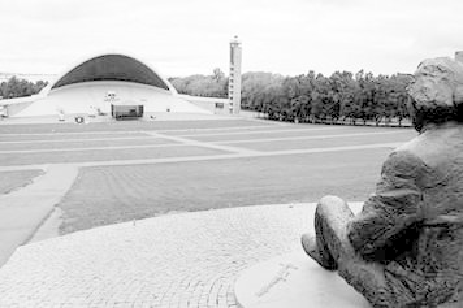Travel Reference
In-Depth Information
Later, in the Brezhnev years, Estonian artists managed to slip Surrealist,
Pop, and Photorealist themes into their work (for example, Rein Tammik's
large painting
1945-1975
). Estonia was the only part of the USSR that recog-
nized Pop Art. As the Soviets would eventually learn, change was unstop-
pable.
The rest of the museum is devoted to temporary exhibits, with contempor-
ary art always on the
fifth floor
(where there's a nice view back to the Old
Town from the far gallery). It's also worth admiring the mostly successful ar-
chitecture—the building is partly dug into the limestone hill, and the facade is
limestone, too.
▲Song Festival Grounds (Lauluväljak)
—At this open-air theater, built in
1959 and resembling an oversized Hollywood Bowl, the Estonian nation
gatherstosing.Everyfiveyears,thesegroundshostahugenationalsongfest-
ival with 25,000 singers and 100,000 spectators. While it hosts big pop-music
acts, too, it's a national monument for the compelling role it played in Esto-
nia's fight for independence.
Since 1988, when locals sang patriotic songs here in defiance of Soviet
rule, these grounds have taken on a symbolic importance to the nation. Locals
vividly recall putting on folk costumes knitted by their grandmothers (some

